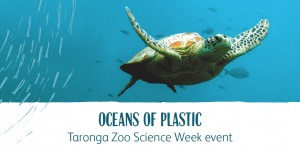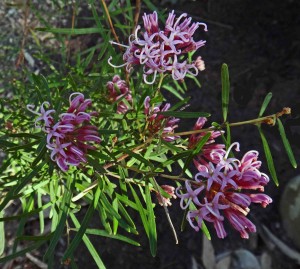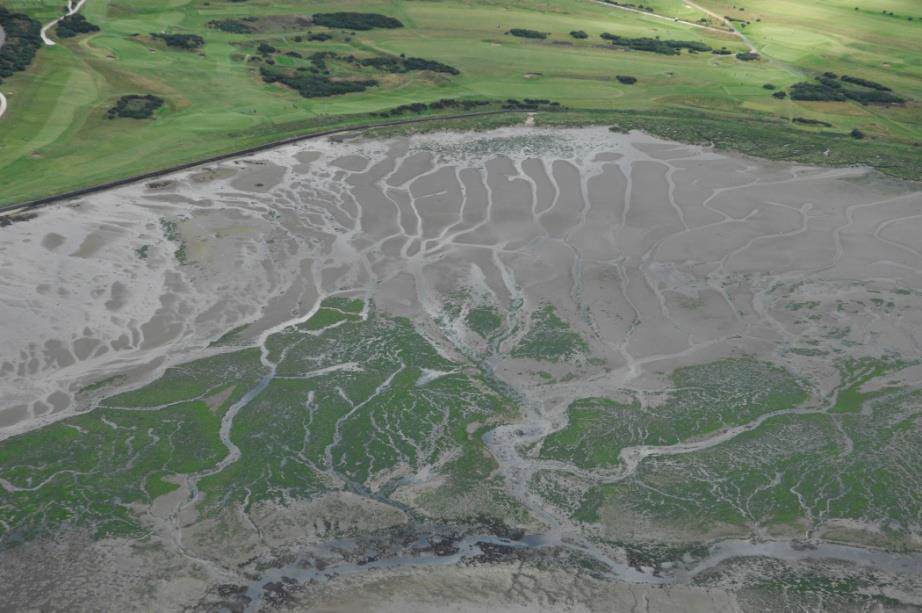Relationships between estuarine modification and leaf litter decomposition vary with latitude
Ainley, L. B., and M. J. Bishop. 2015. Relationships between estuarine modification and leaf litter decomposition vary with latitude. Estuarine, Coastal and Shelf Science. | Find with Google Scholar »
|
Dear biologists
A few things of note from this week.
- Melanie and I attended the Faculty retreat Wednesday-Thursday – there was lots of discussion of challenges and opportunities for the Faculty over the next few years, including the planned new Science building. We’ll discuss this at the next Dept meeting in September.
- Melanie will be taking over from Simon Griffith as Chair of our Research Committee (thanks to Simon for his great contributions over the last few years) – so Mel and her committee are your first port of call on research matters.
- Speaking about research matters – Internal grant schemes MQNS and MQRDG are now open – if you are eligible then please apply! And a heads up that RIBG grants are due 30 September (and earlier at the Faculty) – if you haven’t already let us know you plan to apply then contact Mel or myself.
- Finally all unit and program changes are due by 30 September – Michelle P and her curriculum team are likely to have this all in hand, but if you have anything in relation to your unit that needs changing please let us know ASAP.
We look forward to welcoming back a rejuvenated bunch of animal behaviouralists from the conference in Cairns this week!
Anne Marie is away next week so please send your news items to Katherine (katherine.mcclellan@mq.edu.au) for our next issue.
Cheers,
Michelle
General News and Announcements
Department Christmas Party – Volunteers Needed
![]() We have booked the courtyard for Friday, December 18th from 12-4 for our annual celebration. We’ll send more details closer to the date but now we are looking for some volunteers to help us host on the day. If you’re keen to help out please contact annemarie.monchamp@mq.edu.au who will put all the volunteers together.
We have booked the courtyard for Friday, December 18th from 12-4 for our annual celebration. We’ll send more details closer to the date but now we are looking for some volunteers to help us host on the day. If you’re keen to help out please contact annemarie.monchamp@mq.edu.au who will put all the volunteers together.
Greetings from the Nursery
Hello everyone,
I saw that Rekha had passed on the good news – Ivan and I have welcomed our little girl on Tuesday 4th of August, after a rather lengthy labour of 34 hours. That day I had gone swimming at La Perouse, my mother seems to think it is the shock of the cold water that brought on labour!
We came home on Thursday and are settling into our new life together. We are very happy and she is a calm baby so far – let’s hope it lasts!
I hope you are all doing really well, I will come visit once we are a bit more settled.
Cheerio 🙂
Amanda Sordes, University Dive Officer
Learning and Teaching Week
Learning and Teaching Week will be held between 14 and 17 September 2015 at various venues across campus. Registration links to the full program of presentations, discussion panels and keynote sessions are now available here. You are encouraged to have a look at the program and join in!
Exam Script Details Update
It’s that time of semester when we need to let the exam unit know of any updates to exam script details (such as booklets/materials requirements) and contact details.
All the details to do this are on our L&T wiki here.
Funding Available
There are opportunities for funds to develop collaborative relationships with staff at KU Leuven (Belgium) following the visit by Prof Coppin from KU Leuven last week. Have a look at their website here to see if there are areas of research interest or people to develop collaborative relationships with, including HDR supervision. If you are interested Michelle can direct you to the right people to ask for travel funds!
Breakfast burritos Wednesday Aug 19
3: bring $10 to HOD office
Welcome – new PhD student Rachael Woods
Rachael is a coral larval biologist who will be investigating the biogeographical limitations to coral larval dispersal. In particular, she will focus on the survival of tropical larvae in novel temperate environments in order to triangulate the life history stage that sets pole-ward range extents for reef building coral species. Research will include an experimental component (exploring settlement and metamorphosis in a range of different water conditions and settlement cues), novel field component (searching for juveniles at high latitude locations) and statistical modelling to gain a broad scale understanding of and predictive capacity for pole-ward dispersal. Rachael aims to provide insight into the future range shifts of coral reef ecosystems that will help temperate marine managers to plan under changing environmental conditions.
Rachael can be found in E8B212.
Branding for Academics
Postgraduate students, postdocs and supervisors might want to read the short commentary on Creating a Research Brand that appears in the latest volume of Science. McDonnell, 349 (6249
Biology Seminar Wednesday 19th at 1PM in the Biology Tea Room
Next week’s BioSeminar speaker is Dr. Susan Healy of the University of St Andrews in the UK. Susan will be giving a very interesting talk on her group’s work on bird cognition as it relates to nest-building abilities.
Time & location: 1pm Wednesday in the Bio tea room
Title: ‘How does a bird know what nest to build?
Abstract:
Since the discovery in 1996 that New Caledonian crows make and use tools, tool manufacture and use by birds has captured the headlines. This is not least because it questions the degree to which primates are considered ‘special’. For both groups, however, it is considered that tool use requires ‘complex’ cognitive abilities. In this talk I begin by suggesting that nest building by birds shares striking phenotypic similarities with tool use in at least two major features: appropriate material choice and appropriate material manipulation. And yet, the typical assumption is that nest building is entirely innate or genetic and does not require ‘complex’ cognition. I will go on to describe some of the work conducted by my group where we have set out to discover what birds might learn about nest building and where in the brain activity occurs during nest building. Along the way, I will point how quite how little we know about a behaviour that would seem to be key to successful reproduction for most birds
Bio:
Sue Healy is a zoologist who works investigates animal cognition and its neural bases in ‘real’ animals. She has worked on spatial memory in food-storing birds (in the lab) and hummingbirds (work ongoing in the Rockies in Canada), sex differences in spatial cognition in mammals and is now addressing the behaviour, cognition and neurobiology of nest building in birds (lab and field). Sue has spent time in both Psychology (Newcastle, UK and St Andrews) and Biology (Otago, Oxford, Edinburgh and St Andrews) departments because she tries to integrate both theory and data from both fields into her work.
Biological Sciences Volunteers at the Australian Museum Science Festival
These are some of the Biological Sciences volunteers at the faculty’s stand, PhD students Dalila, Maria and Mohasin. This week was primary schools…we had rock oysters, fossils, shark videos, and fruit flies. It was a lot of fun!
Centre for the Health Economy – Strategy Launch – Previe
With the Centre for the Health Economy becoming firmly established within Macquarie University, the Deputy Vice-Chancellor (Research), Professor Sakkie Pretorius, and the Executive Dean of the Faculty of Business and Economics, Professor Mark Gabbott, would like to introduce the Centre’s new team, and allow them to share their research strategy for the immediate future.
Event Details
The launch of the Centre’s strategy is a chance for internal members of the academic and campus research community to network with others within the University in the lead up to ARC and NHMRC grant application rounds.
You will learn about the research capability of the Centre, it core research areas of focus, skills and capability of team members, and how to best collaborate with the team to maximise grant funding opportunities.
Dr Henry Cutler (Director) will also provide an overview of the Centre’s activities, and co-present with Associate Professor Denise Jepsen on an exciting new collaborative study into Integrated Care with a Local Health District in NSW.
Email your RSVP here
Highlights
• Understand the Centre’s objectives and strategy
• Meet the Centre Director and the research team
• Learn how to maximise grant funding opportunities through collaboration with the Centre
Date – Tuesday August 25, 2015
Time – 4:00pm – 5:00pm followed by networking drinks
Venue – Lecture Theatre, Level 1, The Australian Hearing Hub, University Drive
Enquiries – Please contact Meredith on 0417 155 550
Background
This event is hosted by the Centre for the Health Economy. Our objective is to provide government, business, and not-for-profit organisations with world-leading independent and applied research, which can be used to inform public debate, assist government and business decision-making, and help formulate strategy and policy.
We look forward to discussing potential areas of collaboration with you.
Dr Henry Cutler, Director, Centre for the Health Economy (health-economy@mq.edu.au)
PLANT OF THE WEEK Grevillea sericea – Pink Spider Flower – flowering in bushland and gardens now
Oceans of Plastic: Taronga Zoo Event
The zoo is org anising a Science week event next Thursday night called ‘Oceans of Plastic’. There will be several experts on the night talkingabout how plastic impacts on our oceans, and what the community can do to help with the issue. For more information see the flyer here and check out the Eventbrite site here to see the speakers who’ll be talking. Tickets are cheap – only $5/person.
anising a Science week event next Thursday night called ‘Oceans of Plastic’. There will be several experts on the night talkingabout how plastic impacts on our oceans, and what the community can do to help with the issue. For more information see the flyer here and check out the Eventbrite site here to see the speakers who’ll be talking. Tickets are cheap – only $5/person.
Parexel Job Opportunities
Parexel is looking for a few ROAs (research operations assistant) in Macquarie Park. They are looking for near completion students or new grads. The jobs are there but not yet advertised/published. Candidates need to have strong research skills, be familiar with scientific methods and know how to conduct trials/research. To be notified about the jobs, applicants should submit their email address in the job alert here.
Public Talk on urban ecology
When: This Sunday, 16 August 10am – 12noon
Where: Sydney Olympic Park – map included in flier here.
Talks: Healthy Habitats, Birds in the city, Microbats, Threatened plants, Urban wetlands and more – see the flier here.
Free and light morning tea provided
New Publications
Evaluation of the realism of climate reconstruction using the Coexistence Approach with modern pollen samples from the Qinghai-Tibetan Plateau
Zhang, Z.-Y., S. P. Harrison, V. Mosbrugger, D. K. Ferguson, K. N. Paudayal, A. Trivedi, and C.-S. Li. 2015. Evaluation of the realism of climate reconstruction using the Coexistence Approach with modern pollen samples from the Qinghai-Tibetan Plateau. Review of Palaeobotany and Palynology 219:172-182. | Find with Google Scholar »Reproducible research in the study of biological coloration
White, T. E., R. L. Dalrymple, D. W. A. Noble, J. C. O'Hanlon, D. B. Zurek, and K. D. L. Umbers. 2015. Reproducible research in the study of biological coloration. Animal Behaviour 106:51-57. | Find with Google Scholar »Egernia lizards
While, G. M., D. G. Chapple, M. G. Gardner, T. Uller, and M. J. Whiting. 2015. Egernia lizards. Current Biology 25:R593-R595. | Find with Google Scholar »Investigation into potential transmission sources of Giardia duodenalis in a threatened marsupial (Petrogale penicillata)
Vermeulen, E. T., D. L. Ashworth, M. D. B. Eldridge, and M. L. Power. 2015. Investigation into potential transmission sources of Giardia duodenalis in a threatened marsupial (Petrogale penicillata). Infection Genetics and Evolution 33:277-280. | Find with Google Scholar »Model Adequacy and the Macroevolution of Angiosperm Functional Traits
Pennell, M. W., R. G. FitzJohn, W. K. Cornwell, and L. J. Harmon. 2015. Model Adequacy and the Macroevolution of Angiosperm Functional Traits. American Naturalist 186:E33-E50. | Find with Google Scholar »Resolving Australian analogs for an Eocene Patagonian paleorainforest using leaf size and floristics
Merkhofer, L., P. Wilf, M. T. Haas, R. M. Kooyman, L. Sack, C. Scoffoni, and N. Ruben Cuneo. 2015. Resolving Australian analogs for an Eocene Patagonian paleorainforest using leaf size and floristics. American Journal of Botany 102:1160-1173. | Find with Google Scholar »Current insecticide treatments used in locust control have less of a short-term impact on Australian arid-zone reptile communities than does temporal variation
Maute, K., K. French, C. M. Bull, P. Story, and G. Hose. 2015. Current insecticide treatments used in locust control have less of a short-term impact on Australian arid-zone reptile communities than does temporal variation. Wildlife Research 42:50-59. | Find with Google Scholar »Parasitic nematode communities of the red kangaroo, Macropus rufus: richness and structuring in captive systems
Lott, M. J., G. C. Hose, and M. L. Power. 2015. Parasitic nematode communities of the red kangaroo, Macropus rufus: richness and structuring in captive systems. Parasitology Research 114:2925-2932. | Find with Google Scholar »Will there be a shift to alien-dominated vegetation assemblages under climate change?
Leishman, M. R., and R. V. Gallagher. 2015. Will there be a shift to alien-dominated vegetation assemblages under climate change? Diversity and Distributions 21:848-852. | Find with Google Scholar »Comparison of invertebrate herbivores on native and non-native Senecio species: Implications for the enemy release hypothesis
Harvey, K. J., D. A. Nipperess, D. R. Britton, and L. Hughes. 2015. Comparison of invertebrate herbivores on native and non-native Senecio species: Implications for the enemy release hypothesis. Austral Ecology 40:503-514. | Find with Google Scholar »Evaluation of CMIP5 palaeo-simulations to improve climate projections
Harrison, S. P., P. J. Bartlein, K. Izumi, G. Li, J. Annan, J. Hargreaves, P. Braconnot, and M. Kageyama. 2015. Evaluation of CMIP5 palaeo-simulations to improve climate projections. Nature Climate Change 5:735-743. | Find with Google Scholar »Putative Predators of Carcinus Maenas in Eastern Australia
Garside, C. J., M. A. Coleman, B. P. Kelaher, and M. J. Bishop. 2015. Putative Predators of Carcinus Maenas in Eastern Australia. Estuaries and Coasts 38:1557-1568. | Find with Google Scholar »In the Media
Oyster ‘apartments’ a new look for Sydney Harbour
Mel Bishop was featured in last weekend’s Sydney Morning Herald.
Read more »Nathan Hart comments on government plans to reduce shark attacks
Associate Professor Nathan Hart spoke to 702 ABC Sydney about the government’s plans to reduce the number of shark attacks.




